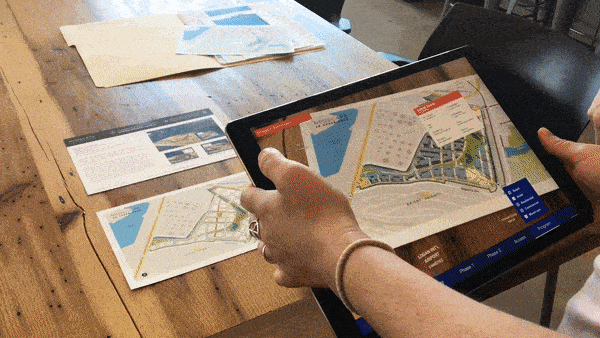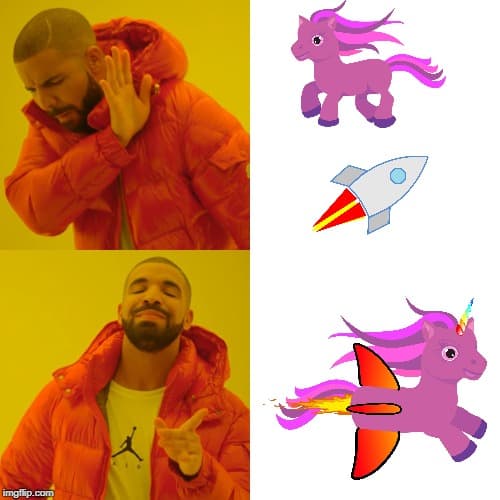What Goes Into Building an AR Brand Experience?
Neoscape Discusses Best Practices
In today’s screen-dominated world, it can be difficult as a marketer to break through the noise and connect with anyone, let alone your target audience. Consumers are bombarded with marketing messages from the moment they wake up until they go to sleep. The question then becomes, how do you break through in a meaningful way while staying authentic to your brand?

Pulling the right marketing lever for your audience can be the difference between growing your business or simply adding to the noise. Fortunately, technological innovations have created nearly infinite levers for you and your marketing partners to pull. Augmented reality (AR) technology, when used correctly, can be a valuable tactic to help tell an authentic brand story while delivering one-on-one consumer connections, curated insights, and elevated user engagement across platforms. AR can break through the clutter.
Just pulling the lever, though, is not enough. Your plan must be carefully crafted with both your target consumer and campaign goals at the forefront of your strategy. This will help you reach the right audience with the right story at the right time.
Narrative – Using AR to tell a compelling story
As with any new and exciting technology, AR is suffering from “new and shiny” syndrome (remember QR codes or iBeacon technology?). All too often, brands look to agencies and other experts to leverage the technology without considering how it can be used most effectively. It’s easy to reach people through AR. The challenge comes in encouraging sustainable purchase behavior, developing authentic relationships with consumers, and fostering brand loyalty.
Storytelling is arguably the most effective tool for building and maintaining a relationship with your audience. AR can play an important role in communicating your brand story, but only when it does so in a unique way. Utilizing AR just for AR’s sake is superfluous and off-putting to today’s consumers who can smell inauthenticity from a mile away.
We like to be specific, so here’s a story IRL. A client recently came to us with a challenge: market a large parcel of land by telling a multi-layered story about the ease of transportation. After diving into the narrative, it became clear that this story could best be told through AR.
The client had created a large physical model of the area showing key access points to and from the site. While this helped communicate the site’s physical layout, it only told a small part of the transportation story. As a static piece, the model was limited in its ability to adapt to changes or dynamically convey information.
We quickly identified an opportunity to give the story greater depth and captivate the consumer beyond a table and a model. The answer was a custom AR app designed to complement the physical model and maximize its impact.
To bring the idea to life, we made a 3D scan of the completed model and used AR to overlay key access points. Users could walk around the 360-degree site model and immerse themselves in the story at their own pace. The addition of AR interactivity allowed us to tell a richer, more complete story on behalf of our client. As a result, the physical model became a far greater asset in the overall marketing experience and made the transportation story’s value proposition much more powerful.
User Experience – If consumers can’t use it, they’ll lose it
Beyond storytelling, the biggest consideration in designing a custom AR application is the user experience. When thinking about UX, it’s important to ask yourself two questions: 1) what need is this fulfilling for the user? and 2) how can it be seamlessly integrated into their day-to-day life?
At the end of the day, if the user doesn’t have a need for your application, they’ll never use it. Unfortunately, users often don’t realize they have a need until it is fulfilled. This makes identifying the pain point that much harder. In the marketing biz, we call this the unicorn of Utility. A utilicorn. (Or not… We’ll get the branding team to work on a name.)

The point is that a user will return to and continue an experience if it is fulfilling a specific need, big or small. This can be anything from helping them understand a complicated concept to simply enhancing their social media experience.
If utility is one side of the user-experience coin, ease of use is the other. Users want you to solve their problems, and they want you to do so with minimal effort required on their part. Put simply, the experience should be second-nature. Apple, Google, Facebook, and others have done most of the heavy lifting in regards to AR technology – it’s truly like magic. To turn that magic into brand affinity, you have to make the same effort in your UX.
Entertainment – How brand ambassadors are made
Let’s say you just debuted an AR Filter on Instagram. It tells a compelling story, fulfills a consumer need, and is easy to use. You attract a strong user base that resonates with the problem you’re solving and buys into your brand story, but you’re having trouble expanding your reach. New users simply aren’t coming to the table.
This is a problem many marketers and clients run into. Everyone wants to boost their ROI and user engagement. While there is no one-size-fits-all approach to connecting with your audience and growing your user base, there is a “secret sauce,” so to speak, that you can use to spice up your AR and create an experience that consumers just can’t help talking about. This magic ingredient, of course, is fun.
It may seem simple, but entertainment is an incredibly powerful tool. Think about the last GIF, video, or AR experience you told your friend about. Did it make you laugh, make you smile, or entertain in some way? We bet the answer is yes.
AR entertainment can come in countless forms. Maybe it’s a game. Or a video. Or a filter that brings your product packaging to life. For us, it was a custom Instagram filter that allowed users to hatch a rather unusual pet (spoiler alert: filter launching soon). Tracking technology allowed us to further “gamify” the experience by giving users the power to control the movements of their pet. Here, utility and entertainment were one and the same. The filter was simple, easy to use, and allowed us to highlight our work in a more engaging way.
Future – What does AR tech mean for the future of marketing?
Right now, it’s relatively easy to make waves with AR. The technology is still in its infancy and the novelty has yet to wear off. But what is new today becomes commonplace tomorrow. Think about the internet, streaming services, or social media. These exciting technological advancements have become integrated into our daily lives. As a result, it has become harder for marketers to stand out, harder to impress, and harder to create something new.
It’s only a matter of time before the same can be said for AR. As the marketplace becomes increasingly saturated with AR technology, only those who can tell a compelling story, create a seamless user experience, and successfully entertain will continue to make waves.

